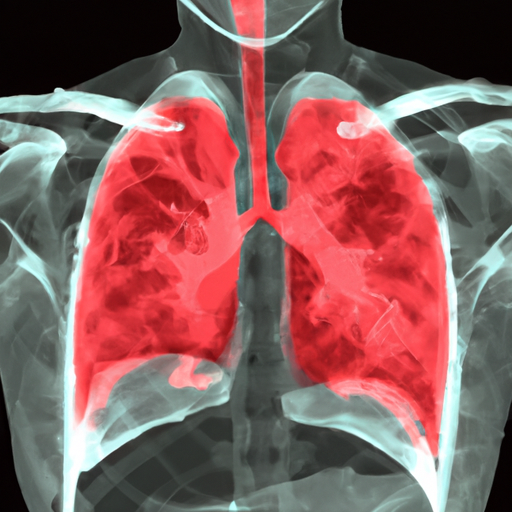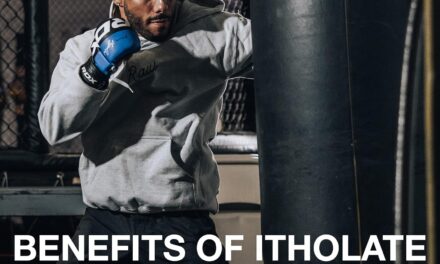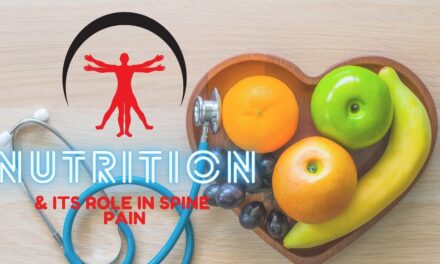
How to Breathe Correctly for Optimal Health, Mood, Learning & Performance | Huberman Lab Podcast

In the captivating episode titled “How to Breathe Correctly for Optimal Health, Mood, Learning & Performance” on the Huberman Lab Podcast, Andrew Huberman explores the fascinating topic of breathing and its impact on various aspects of our lives. With a friendly and informative tone, Huberman dives into the biology of breathing, discussing the delivery of oxygen and carbon dioxide to our cells and tissues. He compares different breathing techniques, such as nose versus mouth breathing, fast versus slow breathing, and deliberate versus reflexive breathing. The episode covers the extensive benefits of proper breathing for mood enhancement, stress reduction, sleep apnea, immune system function, learning, memory, reaction time, and even relieving cramps and hiccups. Huberman also touches on breathing at high altitudes, the negative effects of “overbreathing,” and the popular Wim Hof Method. Throughout the episode, he provides tools and techniques for improving breathing, highlights the importance of nasal breathing, and emphasizes that breathwork practices are not only zero-cost but also require minimal time while greatly improving our overall quality of life. Sponsored by HVMN and Thesis, the podcast shares valuable insights and even offers exclusive discount codes and product recommendations.
In the second part of the episode, Huberman delves into the intricacies of the respiratory system, describing the mechanical and chemical components of breathing. Highlighting the advantages of nasal breathing and the use of the mouth for specific activities, he explains how breathing involves the nose, mouth, larynx, and lungs. From the role of the diaphragm and intercostal muscles in expanding and contracting the lungs to the significance of the phrenic nerve in controlling the diaphragm, Huberman presents a comprehensive overview of the mechanics of breathing. He also addresses the impact of breathing on our organs and the importance of maintaining a proper oxygen-carbon dioxide ratio in our bodies. Additionally, Huberman discusses the connection between breathing and brain function, detailing how different breathing patterns can influence our focus, learning ability, and overall brain activity. Lastly, he explores the physical benefits of nasal breathing, including improved lung health, blood flow, and even facial aesthetics. Throughout the episode, listeners are encouraged to support the podcast by subscribing to the YouTube channel, leaving reviews on Spotify and Apple, and exploring the sponsors’ products, such as Momentous supplements known for their high quality and single ingredient formulations.
The Biology of Breathing
Breathing is a fundamental biological process that we often take for granted. It is an essential function that delivers oxygen to our cells and tissues while removing carbon dioxide, a waste product, from our bodies. Understanding the biology behind breathing can help us optimize our breath and improve our overall health and well-being.
Delivery of Oxygen and Carbon Dioxide
The delivery of oxygen and removal of carbon dioxide is a vital process in our bodies. Oxygen is carried by red blood cells from the lungs to the tissues, where it is used in cellular respiration to produce energy. Carbon dioxide, on the other hand, is a waste product that is transported back to the lungs to be exhaled.
Breathing involves the nose, mouth, larynx, and lungs. The diaphragm and intercostal muscles are responsible for expanding and contracting the lungs, allowing air to flow in and out. The phrenic nerve controls the diaphragm and also provides sensory feedback on its position.
When we inhale, oxygen-rich air enters our lungs and travels down small airways called bronchioles, eventually reaching millions of tiny sacs called alveoli. The alveoli increase the surface area of the lungs, allowing for more efficient exchange of oxygen and carbon dioxide. Oxygen diffuses from the alveoli into the bloodstream, while carbon dioxide moves from the bloodstream into the alveoli to be exhaled.
Comparing Different Breathing Techniques
There are various breathing techniques, each with its own benefits and effects on our bodies. One important distinction is between nose breathing and mouth breathing. Breathing through the nose has more resistance but allows for greater lung expansion and a longer exhalation. It is also beneficial for filtering and humidifying the air we breathe, as well as bringing in more oxygen.
Breathing through the mouth, on the other hand, can be useful in specific activities such as intense exercise or when the nose is congested. However, it is generally best to prioritize nasal breathing for everyday activities.
The speed of breathing also plays a role in our physiology. Slow, deep breathing has been shown to activate the body’s relaxation response, reducing stress and promoting a sense of calm. Fast breathing, on the other hand, can stimulate the sympathetic nervous system and increase alertness and arousal.
Another important distinction in breathing techniques is between deliberate breathing and reflexive or unconscious breathing. Deliberate breathing involves consciously controlling the breath, while reflexive breathing occurs automatically without conscious effort. Both types of breathing have their place in different situations, and it can be beneficial to explore and practice both.
Benefits of Proper Breathing
Proper breathing has numerous benefits for our overall health and well-being. It can positively impact our mood, reduce stress, improve sleep apnea, enhance facial aesthetics, boost immune system function, support learning and memory, and increase reaction time. Let’s explore each of these benefits in more detail.
Mood Improvement
Proper breathing techniques, such as slow, deep breathing, have been shown to activate the parasympathetic nervous system, which is responsible for rest and relaxation. This can help reduce anxiety, promote a sense of calm, and improve overall mood. Taking a few moments each day to focus on your breath and practice deliberate breathing can have a significant impact on your emotional well-being.
Stress Reduction
The breath is closely tied to our stress response. Shallow, rapid breathing is a common symptom of stress, while slow, deep breathing can activate the body’s relaxation response. By practicing deep breathing, you can help reduce stress levels, lower blood pressure, and promote a sense of calm and well-being.
Sleep Apnea
Sleep apnea is a common sleep disorder characterized by pauses in breathing or shallow breathing during sleep. Nasal breathing during sleep can be a behavioral intervention for sleep apnea, helping to keep the airway open and reduce the frequency of breathing disruptions. This can improve sleep quality and reduce the negative health effects associated with sleep apnea.
Facial Aesthetics
Believe it or not, proper breathing techniques can also have an impact on our facial aesthetics. Breathing through the nose promotes proper tongue posture, which can help develop a strong, well-aligned jawline and prevent dental issues. Additionally, nasal breathing encourages proper development of the facial muscles, leading to a more symmetrical and attractive appearance.
Immune System Function
Proper breathing supports immune system function by increasing oxygenation and improving circulation. Oxygen is essential for immune cell function and energy production, while proper circulation helps transport immune cells throughout the body. By practicing good breathing techniques, you can enhance your immune system’s ability to function effectively and protect against illness.
Learning and Memory
The brain requires a constant supply of oxygen to function optimally. By improving oxygen delivery through proper breathing techniques, you can enhance brain function, including learning and memory. Nasal breathing has been shown to increase activity in areas of the brain involved in these cognitive processes, leading to improved performance and retention.
Reaction Time
Proper breathing techniques can also improve reaction time, allowing for quicker reflexes and responses. Inhaling through the nose during the presentation of fear-inducing stimuli has been shown to enhance reaction time, helping individuals respond more effectively in high-pressure situations. By practicing deliberate breathing, you can improve your ability to react quickly and accurately.
Relieving Cramps and Hiccups
Certain breathing techniques can help alleviate cramps and hiccups. One technique involves three inhales through the nose followed by a long exhale. This pattern can help rebalance the body and relieve spasms, making it an effective method for stopping hiccups and reducing cramps.
Breathing at High Altitudes
Breathing at high altitudes can be challenging due to the lower air pressure and reduced availability of oxygen. At high altitudes, there is less oxygen in the air, making it more difficult for our bodies to adequately oxygenate our cells and tissues.
While the body does adapt to higher altitudes over time by increasing the production of red blood cells and improving oxygen-carrying capacity, those who are not acclimated or have underlying health conditions may experience symptoms of altitude sickness, such as shortness of breath, fatigue, and dizziness.
Proper breathing techniques, such as slow and deep breathing, can help optimize oxygen intake and support acclimatization to high altitudes. It is also important to stay hydrated and listen to your body’s signals to prevent overexertion.
The Negative Effects of Overbreathing
Overbreathing, or breathing in excess of the body’s metabolic needs, can have negative effects on our health and well-being. When we overbreathe, we expel more carbon dioxide than necessary, leading to low levels of carbon dioxide in the blood and tissues. This can result in a reduction in oxygen supply to the brain by up to 40%, leading to symptoms such as lightheadedness, fatigue, and increased anxiety.
Low carbon dioxide levels can also lead to vasoconstriction, a narrowing of the blood vessels, which can further exacerbate feelings of lightheadedness and decrease oxygen delivery to the organs. Over time, chronic overbreathing can have negative effects on various organs, including the liver, lungs, and stomach.
It is important to be mindful of our breath and ensure that we are not overbreathing. Practicing proper breathing techniques and avoiding hyperventilation can help maintain a healthy balance of oxygen and carbon dioxide in the body, promoting optimal health and well-being.
The Wim Hof Method
The Wim Hof Method is a breathing technique developed by Dutch athlete Wim Hof, also known as “The Iceman.” The method combines specific breathing exercises, cold exposure, and mindfulness to enhance physical and mental well-being.
One aspect of the Wim Hof Method is cyclic hyperventilation, a pattern of deep inhales and passive or active exhales. This technique can increase stress levels and release adrenaline, leading to a heightened state of alertness and mental focus. It also allows individuals to explore maintaining a calm state of mind and body in high-stress situations.
Another component of the Wim Hof Method is deliberate cold exposure. Cold exposure has been shown to have numerous health benefits, including improved circulation, increased energy expenditure, and enhanced immune system function. The method encourages individuals to gradually expose themselves to cold temperatures, allowing their bodies to adapt and experience the positive effects.
It is important to note that caution should be taken when practicing cyclic hyperventilation near water to avoid shallow water blackout. Additionally, the Wim Hof Method should not be used as a substitute for medical care, and individuals with underlying health conditions should consult with a healthcare professional before attempting the method.
Tools and Techniques for Improving Breathing
There are several tools and techniques that can help improve breathing and optimize breathwork practices. These include carbon dioxide tolerance tests, box breathing, breathwork for stress reduction, and cyclic hyperventilation.
Carbon Dioxide Tolerance Tests
A carbon dioxide tolerance test is a simple assessment that can help determine how well an individual manages carbon dioxide levels and controls their breathing. The test measures the time it takes for an individual to discard carbon dioxide from their lungs, from full lungs to empty lungs. This measurement, known as the carbon dioxide discard rate, can provide valuable insights into breathing management.
Individuals with a carbon dioxide discard rate of 20 seconds or less have low tolerance, while those with a rate between 25-45 seconds have moderate tolerance, and those with a rate of 50 seconds or more have high tolerance. By tracking and improving carbon dioxide tolerance, individuals can enhance their breath control and optimize their breathing patterns at rest and during physical activities.
Box Breathing
Box breathing is a breathwork exercise that involves inhaling, holding the breath, exhaling, and holding again, all in equal durations. The specific duration of each phase of the exercise is determined by the individual’s carbon dioxide discard rate.
Box breathing helps improve neuromechanical control over the diaphragm and promotes better breathing patterns at rest. It can be done for 2-3 minutes, 1-2 times per week, and should be performed through the nose whenever possible. For individuals with a severely blocked nose, mouth breathing can be used as an alternative.
Progress with box breathing can be tracked by measuring the carbon dioxide discard rate over time, observing improvements in breath control and tolerance.
Breathwork for Stress Reduction
Breathwork practices have been shown to be effective in reducing stress and improving overall well-being. A study conducted by a laboratory at Stanford School of Medicine compared different breathwork practices to meditation. The study measured physiological parameters and collected subjective reports on mood and sleep.
The study found that deliberate breathwork practices done for about five minutes per day led to greater reductions in stress compared to meditation. Three different types of breathwork practices were explored: box breathing, cyclic sighing, and cyclic hyperventilation.
Cyclic sighing, which involves deep inhales through the nose and exhales through the mouth, was found to be the most effective practice for reducing stress and improving sleep. One physiological sigh, which involves a deep inhale followed by a longer exhale, was found to be the fastest way to induce calm and reduce stress in real-time.
These breathwork practices can be used as tools for stress management, allowing individuals to quickly and effectively reduce stress levels and bring about a sense of calm and well-being.
Cyclic Hyperventilation
Cyclic hyperventilation is a breathing pattern that involves deep inhales and passive or active exhales. While this technique can increase stress levels and release adrenaline, making it unsuitable for certain situations such as deliberate cold exposure, it can be used as a tool for stress inoculation and training the body to maintain calm in high-stress situations.
Cyclic hyperventilation allows individuals to control the release of adrenaline and explore maintaining a calm state of mind and body even in the face of stress. It is important to exercise caution when practicing cyclic hyperventilation near water to avoid shallow water blackout. Always practice in a safe and controlled environment.
Benefits of Breathwork Practices
One of the most compelling aspects of breathwork practices is that they are zero-cost and require minimal time investment. With just a few minutes a day, individuals can see significant improvements in their overall quality of life.
Breathwork practices offer a wide range of benefits, including improved mood, reduced stress, better sleep, enhanced learning and memory, increased reaction time, and relief from cramps and hiccups. By incorporating breathwork into your daily routine, you can experience these benefits and support your overall health and well-being.
Sponsor: HVMN and Thesis
This podcast episode is sponsored by HVMN and Thesis, two companies that offer products aimed at optimizing human performance and well-being.
Thesis offers four different formulas for customized nootropics. With a discount code provided in the episode, listeners can try these formulas in their first month of subscription and receive a 10% discount. Nootropics are substances that enhance cognitive function and provide a range of benefits for mental performance.
HVMN is a company that offers a wide range of supplements designed to support overall health and well-being. Their products are known for their high quality and single ingredient formulations, providing targeted support for different areas of health.
Additionally, the podcast mentions WHOOP, a fitness wearable device that tracks activity and sleep and provides personalized feedback for better performance. WHOOP can help users optimize their training, recovery, and overall health by providing insights into their sleep patterns, heart rate variability, and training load.
By supporting the podcast sponsors, listeners can further explore tools and resources to optimize their health and well-being.
The Respiratory System
Understanding the respiratory system is key to comprehending the intricate mechanisms underlying breathing. The respiratory system consists of various mechanical and chemical aspects that work together to ensure the proper exchange of oxygen and carbon dioxide.
Mechanically, breathing involves the use of the nose, mouth, larynx, and lungs. The diaphragm and intercostal muscles play essential roles in expanding and contracting the lungs, allowing for inhalation and exhalation.
The diaphragm is controlled by the phrenic nerve, which not only coordinates its movement but also provides sensory feedback on its position. By inhaling and moving the belly outward, the diaphragm contracts and expands the lungs, while exhaling and bringing the belly back in allows the diaphragm to relax.
While diaphragmatic breathing is often emphasized as the ideal breathing technique, there is no evidence to suggest that it is superior to rib cage breathing. Both types of breathing have benefits and may be used interchangeably depending on the individual’s needs and preferences.
The larynx, commonly known as the voice box, is crucial for preventing its collapse during breathing. It needs to remain rigid to maintain a patent airway and ensure the unobstructed flow of air into the lungs.
One notable distinction in breathing is the difference between nasal breathing and mouth breathing. While nasal breathing offers more resistance, it allows for greater inhalation and lung expansion. Nasal breathing also filters and humidifies the air, supporting a healthier respiratory system.
The advantages of nasal breathing extend beyond filtration and oxygenation. It promotes lung health, enhances blood flow, nitric oxide production, and nutrient delivery to the body. Additionally, nasal breathing has the added benefit of improving facial aesthetics, contributing to a more symmetrical and attractive appearance.
However, there are certain activities, such as intense exercise or when the nose is congested, in which mouth breathing may be necessary. Understanding when and how to use each breathing method is an important aspect of optimizing one’s breathing.
Conclusion
Breathing is a fundamental biological process that impacts every aspect of our lives. Understanding the biology of breathing, exploring different breathing techniques, and practicing proper breathwork can have a profound impact on our health, mood, learning, and overall quality of life.
By optimizing our breathing, we can improve our mood, reduce stress, enhance sleep quality, support immune system function, boost cognitive performance, and increase reaction time. Proper breathing techniques, such as nose breathing and slow, deep breathing, can help us achieve these benefits.
Breathing at high altitudes presents unique challenges due to lower air pressure and reduced oxygen availability. By practicing proper breathing techniques and allowing our bodies to acclimate gradually, we can optimize oxygen intake and minimize the negative effects of high altitude environments.
Overbreathing, or breathing in excess of our metabolic needs, can have negative effects on our health. By practicing good breathing habits and avoiding hyperventilation, we can maintain a healthy balance of oxygen and carbon dioxide in the body, supporting optimal health and well-being.
Tools and techniques, such as carbon dioxide tolerance tests, box breathing, and breathwork for stress reduction, can help us improve our breathing and optimize our breathwork practices. These practices are zero-cost and require minimal time investment but can greatly enhance our overall quality of life.
The Wim Hof Method offers a unique approach to breathwork, combining deliberate cold exposure, cyclic hyperventilation, and mindfulness. This method can help individuals manage stress, improve mental and physical performance, and explore the limits of their body’s capabilities. However, caution should be exercised when practicing cyclic hyperventilation near water to avoid shallow water blackout.
The respiratory system plays a vital role in breathing, with mechanical and chemical aspects working together to ensure the proper exchange of oxygen and carbon dioxide. Understanding the mechanics of breathing, the benefits of nasal breathing, and the importance of proper breath control can help us optimize our breathing and support our overall health.
In conclusion, breathwork practices provide numerous benefits for our health and well-being. By incorporating proper breathing techniques into our daily lives, we can improve our mood, reduce stress, enhance sleep, support our immune system, and optimize our cognitive performance. Breathing is a powerful tool that is always available to us, and by harnessing its potential, we can greatly enhance our overall quality of life.























